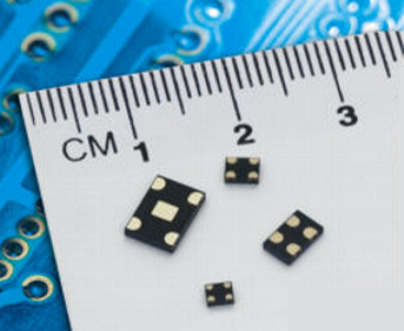MEMS resonator
The market for resonators has been dominated by quartz crystals for decades. They are inexpensive to manufacture, have high frequency and temperature stability and low phase noise. A disadvantage is that they cannot be integrated on silicon wafers and further miniaturization is problematic. In addition, they react critically to heat, shock and vibration.
Resonators in microsystem technology are designed to circumvent these disadvantages, especially the limitations in terms of miniaturization and production technology. Thanks to special technological processes, silicon oscillators have been developed as MEMS resonators using Bulk Acoustic Wave( BAW) techniques based on mechanical bulk waves. They are much smaller than crystals and have comparable frequency stability characteristics.
The resonant frequencies that can currently be realized range from 10 MHz to over 1 GHz. At 400 µm, they are only one-tenth the size of quartz crystals, and at less than 1 ppm for long-term stability, they are superior to quartz crystals even in this value. MEMS resonators are placed on an ASIC, with the MEMS die bonded to the ASIC die using bonding. The Q of MEMS oscillators is ensured under vacuum in an encapsulation process. In addition, the power consumption of MEMS oscillators is lower than that of comparable crystal oscillators and their mean time between failures( MTBF) is over one billion hours of operation.

